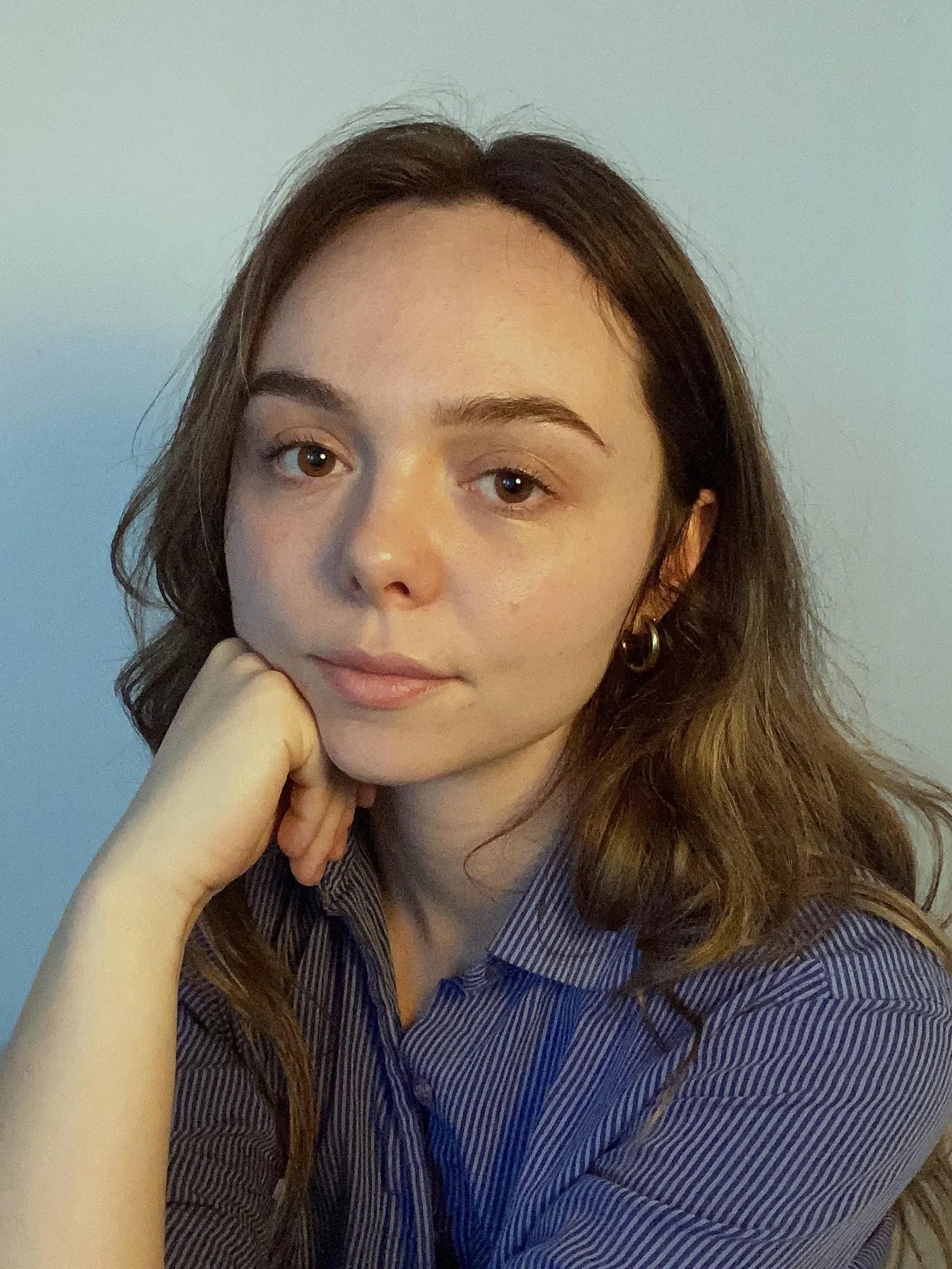Meet the Poets: Aisling Towl
Aisling talks to us about her Issue Three poem, the poets and poetry she loves, and her writing practice
What can you tell us about None of my friends want to talk about heaven?
I started writing it in a bookshop cafe where I’d picked up a copy of Kaveh Akbar’s collection Calling a Wolf a Wolf. This was one of the first poetry collections I read from start to finish when I’d just started writing poetry. Lent by a friend, the book found me at the right time just as it re-found me at the right time again.
One of my all time favourite poems is Aquí te amo (Here I love you) by Pablo Neruda - specifically the line a veces amanezco, y hasta mi alma está húmeda (sometimes I wake up and even my soul is wet). To me, Neruda’s wet soul image inadvertently captures the helplessness and surrender that Akbar explores in his writing around addiction and recovery, something which I’d been searching for a language for in my own work.
What poets and poems are you in dialogue with?
Sarah Ruhl is a poet and playwright I find myself in dialogue with often. The way she talks to God or Gods in her work revolutionised how I think about how poetry connects us with something larger than ourselves, whether or not we keep a religious or spiritual practice elsewhere in our lives.
Hera Lindsay Bird, Eileen Myles, Kim Addonizio and Rachael Allen are some poets I find my poems talking to lots at the moment. Lifelong chats with Mary Oliver, Sharon Olds and Frank O’Hara as much as Fiona Apple, Frank Ocean and Brittany Howard.
Apart from the above, this particular poem’s internet-pilled register is very much a delayed response to Sheena Patel’s novel I’m a Fan, which floored me when I read it and has stayed lodged in my brain the three years since.
Do you write in other forms? If so, how do you toggle between them?
I write for theatre a lot, but I don’t see playwriting as a necessarily separate practice to writing poetry. Often I’ll have the seed of an idea and try it out in a few different forms to see what works best, toggling between dialogue, monologue, something more poetic or descriptive or abstract. Sometimes I’ll spend months inside a play, not writing any poetry at all, but then occasionally I’ll spend months on poems, not writing any plays.
Sometimes I’ll spend months inside a play, not writing any poetry at all, but then occasionally I’ll spend months on poems, not writing any plays
Playwriting is a longer process because it’s generally a longer form; by virtue of this there are more formal and structural conventions which you sort of need to lean on if you want to sustain an audience's attention for a whole evening. Without some kind of robust structure this would be really, really hard to do. I’m thinking less about structure when I write poetry, or perhaps thinking about it differently, but with both forms in different ways, I’m thinking about atmosphere and rhythm.
What is your writing practice? Where and when do you write? By hand, laptop, phone notes…?
On days I’m not working my day job, I typically make a coffee and then sit down to free-write in a notebook first thing in the morning, for about 10 minutes. Then I’ll open the laptop, look over what I’ve done the previous day and edit for a bit. Sometimes I have a plan of what I’m going to write for the rest of the day but more often I’m channeling half-formed ideas into messy first drafts. Most things don’t make it past that stage but if something’s sticking I’ll keep going with it. In the afternoon I usually read a play. In the evening if I don’t have plans I’ll try and write more. If I get stuck I’ll go for a walk and that usually dislodges something, as does seeing a friend or watching a film or taking a shower. On day job days, I write on my commute.
Sometimes I have a plan of what I’m going to write for the rest of the day but more often I’m channeling half-formed ideas into messy first drafts
What one image do you want to send that speaks to your poem?
Ana Mendieta’s Imagen de Yagul, from her Silueta Series. I love Mendieta’s art and what she says about it being a way of reconnecting her body with the universe. Her work across sculpture, painting, video and performance channels something vital about the body and nature; temporal displacement and the conditions under which women live. These are themes I try to reckon with through language and performance, in my own work.
In 1985 Mendieta fell to her death from the window of the 34th floor apartment in Greenwich Village she shared with her husband, the poet and sculptor Carl Andre. She was wearing only her underwear. Neighbours had heard the couple arguing and Andre was charged, but later acquitted, of Mendieta’s murder. She was 36.





